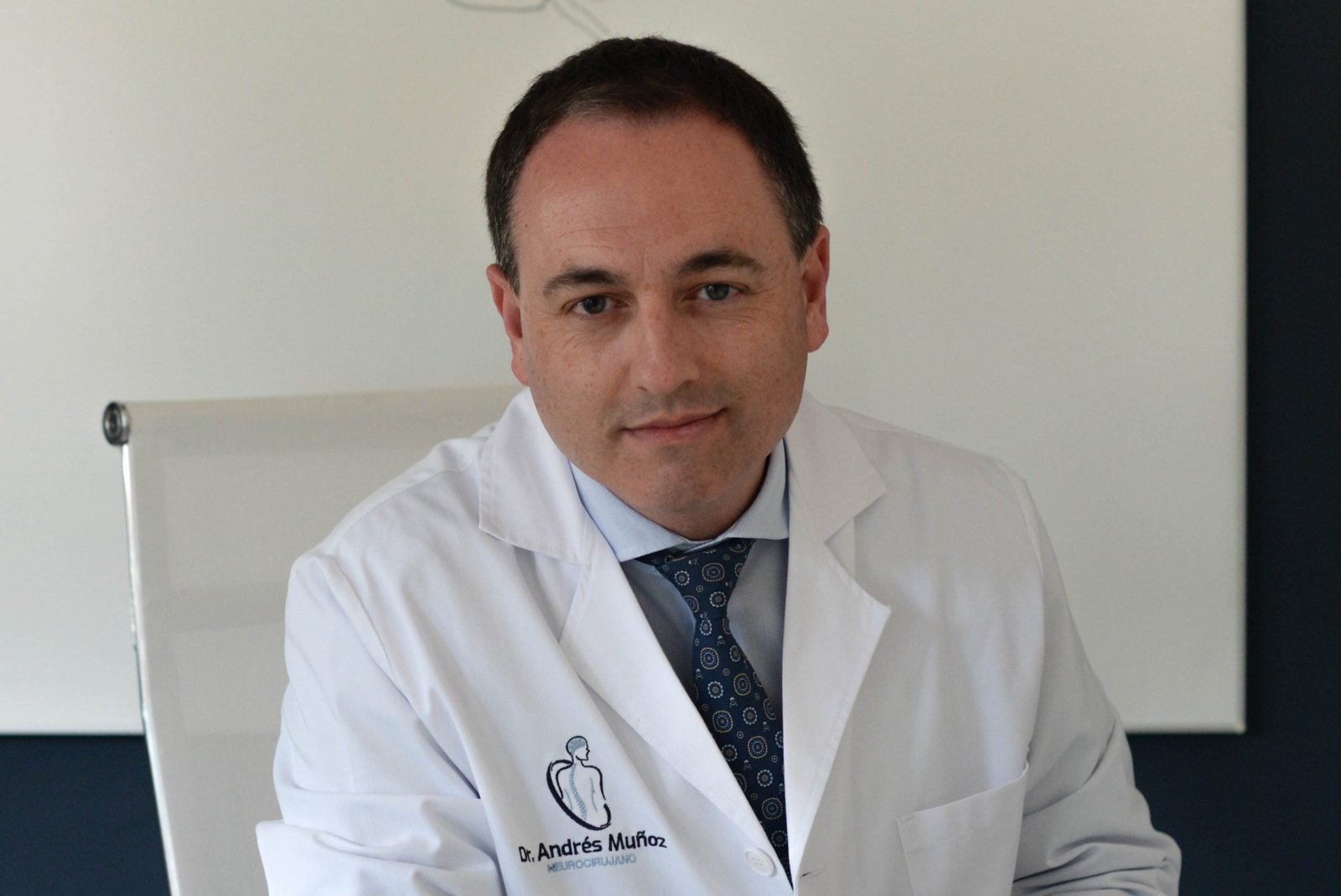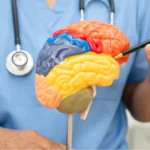
Can you imagine that an excess of fluid in the brain could change everything?
Hydrocephalus is a neurological disorder that occurs when there is a disproportionate accumulation of cerebrospinal fluid (CSF) within the cranial compartment. This fluid is essential for brain health: it protects the brain, cushions head trauma and transports vital nutrients. However, when the balance between CSF production and absorption is disrupted, intracranial pressure increases, which can result in damage to our delicate brain tissue.
Although the diagnosis of hydrocephalus may seem alarming, neurosurgery currently offers effective treatments to combat this problem. As a neurosurgeon specializing in the surgical treatment of alterations of cerebral hydrodynamics and liquor pathologies, such as hydrocephalus, I want to provide you with a detailed understanding of the causes of this entity, the symptoms to watch out for and the surgical treatment options, which are the most common and effective.
What causes hydrocephalus?
There are several reasons why CSF can accumulate in the brain, leading to different types of hydrocephalus. Each has unique causes and characteristics that influence appropriate treatment.
- Congenital hydrocephalus: present from birth, it may be due to brain malformations such as spina bifida or infections during pregnancy that affect the nervous system.
- Acquired hydrocephalus: appears during life, usually after trauma, brain tumor, hemorrhage or severe infections such as meningitis.
- Chronic idiopathic hydrocephalus (formerly called “normal pressure hydrocephalus”): occurs mainly in older adults, with symptoms of gait disturbance and signs of progressive dementia. CSF accumulates due to slowed reabsorption in the brain itself.
Types of hydrocephalus and their symptoms
Hydrocephalus can manifest itself in various forms depending on the age and type of patient, making it a complex disease to diagnose if the correct symptoms are not observed. Early detection is crucial to avoid irreversible brain damage and to ensure effective treatment.
Hydrocephalus in infants and young children
In newborns, the symptoms are often subtle, but one of the most striking signs is the accelerated growth of the head circumference. The infant’s skull, not being completely closed, may expand in response to fluid accumulation in the brain. Common signs include:
- Fontanelles (“molleras”) bulging or tense.
- Excessive irritability without apparent cause.
- Prolonged drowsiness and lack of response to stimuli.
If any of these symptoms are detected, it is essential to seek medical attention immediately. Early diagnosis greatly increases the chances of successful intervention.
Hydrocephalus in young adults
In adolescents and adults, symptoms are usually more specific and evident, affecting both cognitive and physical abilities. Among the most common are:
- Headache. Patients often describe them as persistent and unrelated to other causes.
- Vomiting or nausea: which cannot be attributed to digestive problems.
- Visual problems: such as blurred or double vision.
- Lack of coordination or balance.
Diagnosis at this stage can be confusing, as many of these symptoms can be attributed to other conditions. However, hydrocephalus should be considered a possibility in patients with a history of trauma, infectious or previous hemorrhagic event.
Adult chronic hydrocephalus (or idiopathic)
This type of hydrocephalus is a diagnostic challenge, as its symptoms progress slowly and are often confused with other common diseases of the elderly, such as Alzheimer’s disease or Parkinson’s disease. The most characteristic signs are:
- Walking problems: an unsteady gait, with short steps, with the sensation that the “feet are glued to the ground”. This alteration is called gait apraxia.
- Cognitive impairment: memory loss and difficulty concentrating, which can be confused with dementia.
- Sphincter incontinence: the symptom of urinary incontinence is a late manifestation of the disease but, in many cases, it is already present when the patient comes to our office.
This symptomatic triad (gait apraxia, dementia and incontinence), called Hakim’s triad, is the characteristic symptomatology of this disease.
In these cases, a complete evaluation and imaging tests such as magnetic resonance imaging (MRI) or computed tomography (CT) can help identify the problem.

Diagnosis: the key role of imaging tests
The diagnosis of hydrocephalus is a complex process that requires a multidisciplinary approach. The initial clinical evaluation can identify key symptoms, but to confirm the presence of hydrocephalus, it is essential to use imaging tests that provide a clear view of the affected brain structures and cerebrospinal fluid (CSF) accumulation.
- Computed tomography(CT) is one of the fastest and most accessible tests for obtaining detailed images of the brain. CT scans can look at the ventricles of the brain and detect dilatation, which is indicative of excessive CSF accumulation. In addition, it can identify other abnormalities that may be contributing to hydrocephalus, such as bleeding or brain injury.
- Magnetic resonance imaging(MRI): is much more accurate and detailed than CT, allowing a thorough evaluation of brain tissues and CSF flow throughout the intracranial compartment. It is especially useful for visualizing smaller areas of the brain, detecting obstructions in fluid circulation, and evaluating other neurological conditions that could be confused with hydrocephalus.

Imaging tests confirm fluid accumulation, allowing identification of possible underlying causes, such as tumors, congenital malformations or infections. This level of accuracy is vital in determining the appropriate treatment, as not all forms of hydrocephalus are managed in the same way.
Sometimes, despite having high resolution imaging studies, it can be difficult to reach a diagnosis of hydrocephalus and to distinguish this entity from other causes of dementia with similar symptomatology. In these cases lumbar infusion studies may be useful, such as the Katzman test, which consists of performing a lumbar puncture and infusing small amounts of serum into the spinal canal, monitoring the pressure that is produced. In case of high pressure values we could obtain valuable information that could suggest an alteration of cerebral hydrodynamics, such as hydrocephalus.

Treatment options for hydrocephalus
Treatment of hydrocephalus depends on the severity and specific type of the condition. While some mild forms can be temporarily controlled with conservative management, it should be emphasized that hydrocephalus is a surgical condition, so surgery remains the most effective option in most cases, as it restores balance to the cerebrospinal fluid (CSF) circulation, relieving pressure on the brain and avoiding long-term complications.
Surgical treatment: ventriculoperitoneal shunt (VPS).
The most commonly used procedure to treat hydrocephalus is ventriculoperitoneal shunting (“valves”). This treatment involves implanting a drainage system that diverts excess CSF from the ventricles of the brain to another part of the body, such as the abdomen, where the fluid can be reabsorbed naturally. It is the treatment of choice for chronic adult hydrocephalus.
The shunt system includes a small valve that precisely controls the flow of fluid, ensuring that intracranial pressure is maintained at adequate levels. This method is reliable and has proven to be effective in patients of all ages, and is among its main benefits;
- Rapid and continuous relief of intracranial pressure.
- Reduction of symptoms such as headaches, motor and cognitive problems.
- Significant improvement in quality of life after the intervention.
The bypass system is usually a long-term treatment that requires periodic checks to ensure proper functioning and adjustment of the system if necessary.
Endoscopic ventricle-cysternostomy (ETV)
Another surgical option used for certain types of hydrocephalus is cerebral endoscopy. This minimally invasive procedure allows the creation of a small channel in the anterior portion of the third ventricle of the brain, which facilitates the drainage of CSF naturally into a fluid cistern at the cranial base, avoiding the need to implant an external device.
VTE is particularly useful in certain cases of obstructive hydrocephalus, in which there is an obstruction in the flow of fluid within the brain (congenital stenosis of the aqueduct of Sylvius, tumors, etc.).

Recovery and postoperative follow-up
Once the surgery has been performed, the recovery phase is essential to ensure the success of the treatment. Patients should attend regular check-ups to monitor the functioning of the shunt system or the result of the Endoscopy. These check-ups allow treatment to be adjusted if necessary and ensure that there is no recurrence of symptoms.
In many cases, patients experience a rapid improvement in their overall well-being, regaining lost cognitive and motor skills. Some may need additional support, such as physical rehabilitation or cognitive therapy, especially if the hydrocephalus was diagnosed at an advanced stage. However, thanks to advances in neurosurgery, most patients are able to resume normal daily activities and enjoy a full life.
The importance of proper diagnosis and treatment
Hydrocephalus is a condition that, although serious, can be treated effectively if detected early. Advances in surgical techniques have made it possible to offer effective solutions to drain excess cerebrospinal fluid and relieve pressure on the brain.
If you have noticed any of the above symptoms or if you have been diagnosed with hydrocephalus, it is essential that you consult with a specialized neurosurgeon .
Make an appointment with Dr. Andrés Muñoz, a specialist in neurosurgery trained in specific techniques for the surgical management of cerebral lichenoid pathology, for a complete evaluation and to receive the most advanced and personalized treatment available.
Dr. Andrés Muñoz Núñez
Neurosurgeon
Consultations in: Seville, Malaga, Huelva and Cadiz.
neurocirugia@drandresmunoz.com
Tel: (+34) 609 688 469



